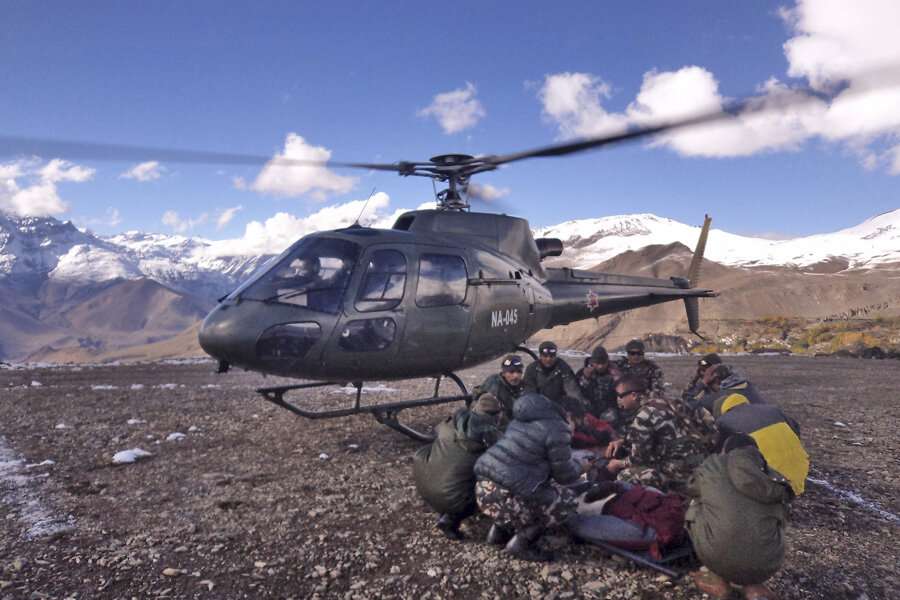At least 12 dead following avalanche, blizzard in Nepal
Loading...
| KATMANDU, Nepal
An avalanche and blizzard in Nepal's mountainous north have killed at least 12 people, including eight foreign trekkers, officials said Wednesday. Five other climbers were hit by a separate avalanche on Mount Dhaulagiri and remain missing.
The death toll was likely to rise as rescuers struggle through snow and rough terrain to help dozens who remained stranded, the officials said.
An avalanche buried one Indian and four Canadian trekkers in Phu on Wednesday, said Devendra Lamichane, chief administrator of Manang district. The snow buried the trekkers' bodies and digging them out would take days, he said.
Three villagers were killed Monday in the same district, about 160 kilometers (100 miles) northwest of the capital, Katmandu, and their bodies were recovered on Wednesday.
In neighboring Mustang district, four trekkers caught in a blizzard died Tuesday. Rescuers recovered the bodies of the two Poles, one Israeli and one Nepali from the Thorong La pass area. The pass is on a route that circles Mount Annapurna, the world's 10th highest peak.
It was initially thought the group had been caught in an avalanche, but government official Yam Bahadur Chokyal said by telephone from Mustang that they had died in the blizzard.
Government official Baburam Bhandari said more bodies were likely to be found. He said it was unclear how many people were on the snow-covered route but dozens were believed to be stranded.
At least 14 foreign trekkers have been rescued so far, and two army helicopters were flying them to Jomsom town.
The avalanche on Mount Dhaulagiri hit climbers at the base camp who were preparing to scale the 8,167-meter (26,800-foot) -high peak, the world's seventh tallest. Two of the missing climbers were from Slovakia and three were Nepalese guides, said Gyanedra Shrestha of Nepal's mountaineering department.
Weather forecasters said the blizzard was caused by a cyclone that hit neighboring India several days ago.
October is the most popular trekking season in Nepal, with thousands of foreigners hiking in the Himalayan mountains.
An avalanche in April just above the base camp on Mount Everest killed 16 Nepalese guides, the deadliest single disaster ever on the mountain. Climate experts say rising global temperatures have contributed to avalanches in the Himalayas.







